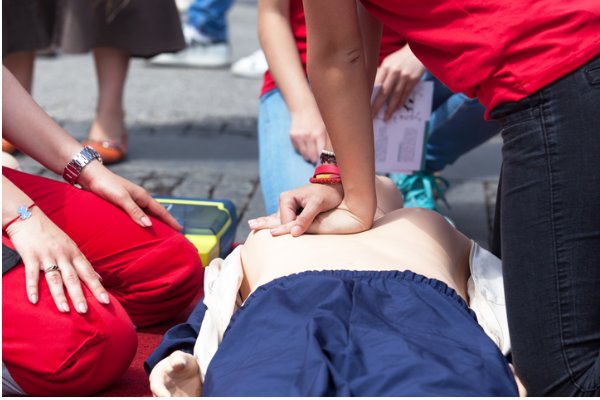Better CPR through Teamwork
February 23, 2018 at 4:35 PM

A well-coordinated team approach with defined roles is just as important as high-quality skills for high-performance CPR. What goes into making a successful emergency team for an improved response to a sudden cardiac arrest incident?
A review of data linking team interactions to the performance of CPR showed that “a prolonged process of team building and poor leadership behavior are associated with significant shortcomings in CPR.” It’s worth brushing up on your team-player skills, whether you’re an emergency care instructor teaching a multi-provider approach to CPR or an EHS professional who is also a member of your organisation’s emergency response crew.
There are several important benefits of a multi-provider team performing CPR, including minimised or eliminated interruptions, relief for fatigued providers and the ability to provide defibrillation sooner. Defined roles in a team approach include the following:
- Compressor: Provides high-quality, minimally interrupted compressions until relieved by another provider.
- Rescue Breather: Establishes and maintains airway, and performs rescue breaths in coordination with the compressor during CPR.
- AED Operator: Brings and attaches defibrillation pads without interrupting CPR. The operator is also responsible for efficient and safe delivery of defibrillation shocks.
- Team Leader: Supervises and optimizes overall team performance and is the main point of internal communication for the team and external communication to responding EMS providers.
- Compressor-In-Waiting: Person identified to seamlessly switch with compressor when compressor is fatigued.
Together, the roles of compressor, rescue breather and AED operator form the primary functional part of a high-performance CPR team, and a team member should be able to fill or switch into any role as needed.
To improve outcomes, a well-coordinated team should perform like a pit crew or orchestra musicians with seamless interactions among team members, built on a foundation of good communication skills:
- Speak calmly and in simple terms.
- Ensure you are heard and understood.
- Respectfully offer suggestions for improvement.
- Speak up if you are fatigued or feel your performance slipping.
- Conduct post-incident debriefings to identify any issues with the response and areas for improvement, and emphasize what was done well and reinforce best practices.
Want to take your emergency care skills to the next level. Talk to us about our new High-Performance CPR programs from MEDIC First Aid. Ideal for industrial emergency response teams, staff at long-term care facilities, lifeguards, law enforcement and correctional officers, as well as crowd management personnel at large gatherings, these programs are available for delivery in classroom and blended learning options.
Explore all our emergency care programs at medicfirstaid.co.nz
Blog references / source
![]()




